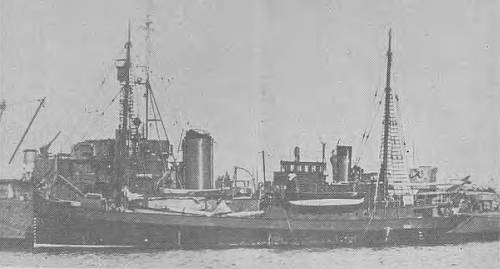- Author
- Vickridge, G.L.W., Lieutenant, RANR
- Subjects
- RAN operations
- Tags
-
- RAN Ships
- HMAS Wyatt Earp, HMAS Wongala, HMAS Albatross, HMA LST 3501, HMAS Labuan I, HMAS Moresby I, HMAS Whyalla I, HMAS Shepparton I, HMAS Australia II
- Publication
- January 1972 edition of the Naval Historical Review (all rights reserved)
PRIOR TO 1911, AUSTRALIAN INVOLVEMENT in Antarctic exploration was limited to providing a jumping-off point for many of the expeditions. The first truly Australian venture was led by Douglas Mawson who first sailed south in that year. Although several semi-private Australian expeditions were mounted over the years, the government did not show any major financial interest until they purchased the auxiliary schooner Wyatt Earp in 1939.
Built in Norway in 1919 as the Fanefjord, she spent many years fishing and sealing in North Atlantic and Arctic waters before being bought by Lincoln Ellsworth in 1933. Renaming her for the famous sheriff of Tombstone, Arizona, the American explorer voyaged to the Antarctic during 1933, 1934, 1935 and 1938 before selling her to the Australian Government for 4,400 pounds.
Lying in Adelaide at the outbreak of war, the veteran polar ship was commissioned in the RAN as HMAS Wongala. Employed as a patrol vessel for the duration of hostilities, Wongala was principally engaged as the examination vessel for Whyalla, but her duties also included cable-laying at Darwin. About August 1945, the 403 ton schooner reverted to her former name and became a Sea Scouts’ training ship until 1947.
In July 1947, the Commonwealth Government established the Australian National Antarctic Research Expeditions – ANARE. Earlier in the same year, a planning committee was formed to advise the Government on Antarctic policy. The Navy’s representative, to advise on hydrographical work and victualling, was the Director of Plans at Navy Office, Melbourne.
Group Captain S.A.C. Campbell, RAAF, was appointed by the Committee as Executive Officer to organise and lead a three pronged Australian expedition to the Antarctic. Stuart Campbell was eminently qualified for the task; in the 1929-30 Antarctic expedition he had been a pilot of Sir Douglas Mawson’s Moth aircraft and returned again the following year. He served in HMAS Albatross, carrying out aerial surveying along the Great Barrier Reef and as a civilian, had undertaken aerial survey jobs in Western Australia and Victoria.

HMAS Wyatt Earp, after being chosen as the expedition vessel, was refitted in Adelaide to enable her to carry out surveying of the King George V Land coastline for the purpose of establishing a permanent continental station in the Antarctic. If possible, the expedition’s geophysicist was to reoccupy the magnetic station at Sir Douglas Mawson’s old base at Commonwealth Bay. The expedition also provided for the establishment of meteorological and geophysical bases at Heard Island and Macquarie Island.
Manned by an RAN crew under the command of Commander Karl E. Oom, RAN,1 Wyatt Earp sailed from Melbourne in late 1947. When south of Macquarie Island the ship encountered heavy seas and developed a leak forcing her to return for repairs. Finally, on 8th February 1948, Wyatt Earp sailed for the Antarctic continent with Group Captain Campbell going in her.
Owing to the extremely heavy pack ice which prevailed during the summer of 1947-48, the twenty nine year old vessel was prevented from reaching the King George V Land coastline despite two separate attempts. Thus, neither the survey was conducted nor the geophysicist landed at Commonwealth Bay. Instead, she headed east to survey the Balleny Islands, which lie close to the eastern limit of the Australian Antarctic Territory and are among the most inhospitable islands in the world.
The first recorded landing on the Ballenys was of several minutes’ duration in 1839; the second was also a brief landing, by Group Captain Campbell, Dr. P. Law and Able Seaman Wallace on 29th February 1948. The weather was too rough for a landing using Wyatt Earp’s motor cutter; even so, the heavy pounding surf forced the immediate retreat of the more sturdy whaler.
The small, slow and under-powered Wyatt Earp proved unsuitable for the requirements of ANARE and the 1948 voyage was her last to Antarctic waters. She was honourably retired and, under private ownership, engaged in the Australian coastal trade as Wongala, and later, Natone. In January 1959 the veteran polar ship was lost off the Queensland coast.
The second RAN vessel to be actively engaged in Antarctic exploration work was HMAS LST 3501. Built by Canadian Vickers in 1943, the Landing Ship Tank was not commissioned into the RAN until after the war. The least conventional of all polar ships, the 2,300 ton vessel served in the founding of the Heard and Macquarie Island stations in 1948 and thereafter in relief operations.




